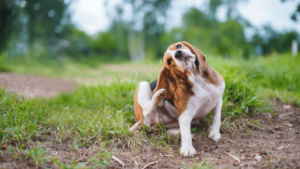

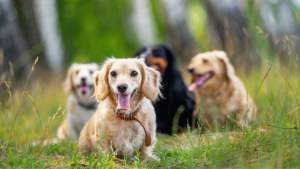



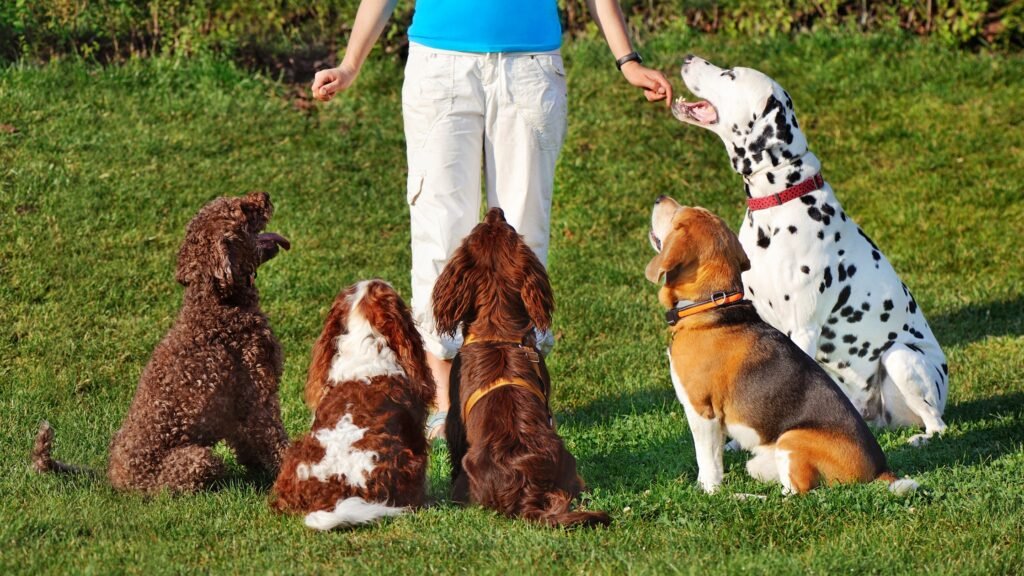
Training your dog is an essential part of ensuring a happy, well-behaved, and obedient pet. Proper training not only improves your dog’s behavior but also strengthens the bond between you and your furry friend. Whether you have a puppy learning basic commands or an older dog needing behavioral adjustments, the right training techniques can make all the difference.
This guide covers proven dog training techniques, the best approaches for obedience training, and expert tips to ensure your dog is well-mannered and responsive in any situation.

Training is more than just teaching commands; it’s about communication, trust, and establishing leadership. Proper dog training helps to:
✔ Prevent behavioral problems like barking, biting, and aggression
✔ Ensure safety by teaching essential commands like “stay” and “come”
✔ Reduce stress and anxiety in dogs through structured learning
✔ Strengthen the owner-dog relationship with mutual respect
A well-trained dog is happier, more confident, and well-adjusted to family life.
Positive reinforcement is one of the most effective and widely used dog training techniques. This method rewards desired behaviors with treats, praise, or playtime to encourage repetition.
✔ Dogs learn faster with rewards rather than punishment
✔ Encourages trust and cooperation
✔ Strengthens good behavior and obedience
How to Use Positive Reinforcement:
🐾 Reward your dog immediately after they perform a desired action
🐾 Use small treats, verbal praise, or favorite toys as rewards
🐾 Be consistent – always reward good behavior to reinforce learning
Example Command: Teaching “Sit”
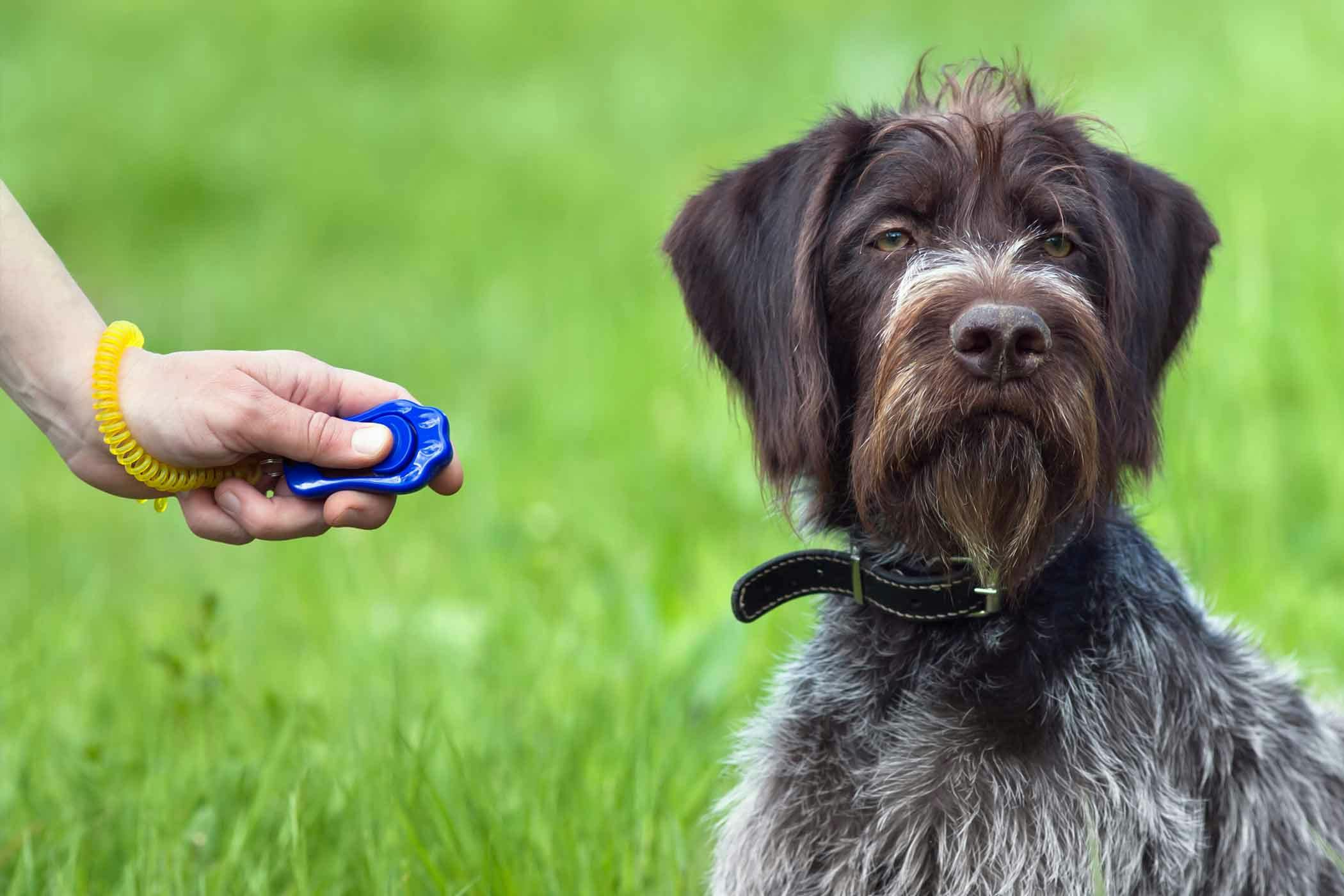
Clicker training is a form of positive reinforcement that uses a small device to mark the exact moment a dog performs the correct behavior. The click sound signals to the dog that a reward is coming, making learning faster and more precise.
✔ Helps dogs associate actions with rewards
✔ Great for obedience training and trick learning
✔ Works well for dogs of all ages and breeds
How to Start Clicker Training:
🐾 Start by clicking and rewarding immediately after a correct action
🐾 Always pair the click with a treat so the dog connects the sound to rewards
🐾 Gradually phase out treats while keeping the clicker
Best For: Teaching complex tricks, agility training, and precise commands.
Leash training is essential to prevent pulling, lunging, and excessive excitement during walks. Proper leash manners make outings enjoyable and stress-free.
✔ Prevents pulling and choking
✔ Helps maintain focus on the owner
✔ Encourages calm and controlled walking
How to Train Your Dog to Walk on a Leash:
🐾 Start indoors or in a low-distraction area
🐾 Hold the leash loosely and encourage your dog to stay by your side
🐾 Stop walking if your dog pulls; only move forward when the leash is slack
🐾 Reward good behavior with treats and praise
Tip: Use a no-pull harness or head collar for dogs that pull excessively.
Read More : Top Labrador Retriever Leashes for Active Dogs: Durable & Reliable
Top 5 Collars for Beagles: Comfort Meets Style
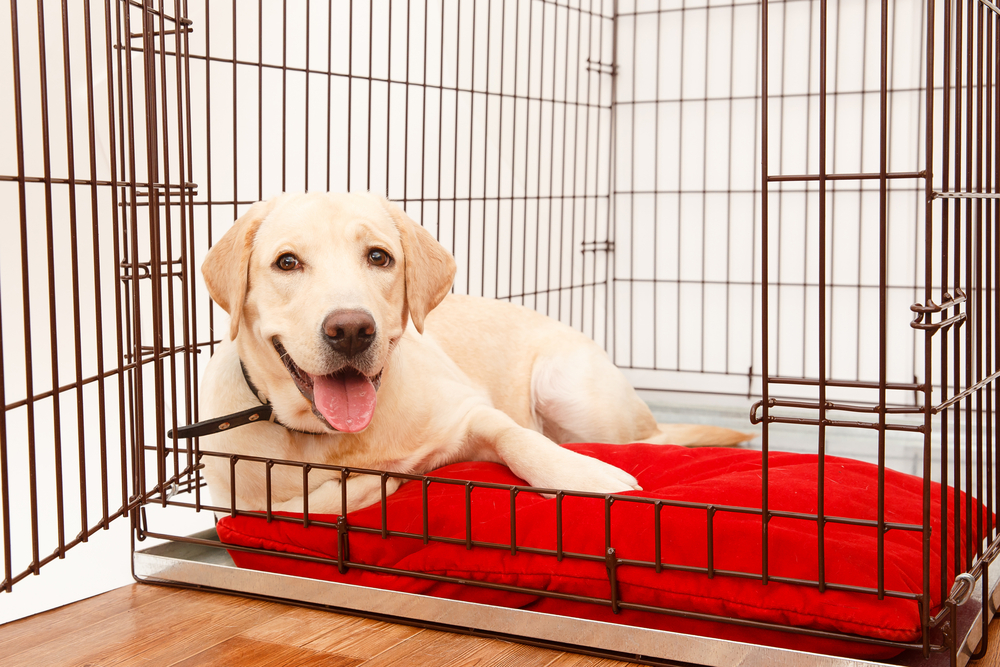
Crate training provides a safe space for your dog while helping with housebreaking, separation anxiety, and nighttime sleeping habits. When done correctly, a crate becomes a positive retreat rather than a punishment.
✔ Helps with potty training and preventing destructive behavior
✔ Encourages independence and confidence
✔ Creates a safe and calming environment
How to Crate Train Your Dog:
🐾 Introduce the crate slowly, using treats and toys inside
🐾 Keep the crate comfortable with bedding and chew toys
🐾 Never use the crate as punishment – it should always feel like a safe space
🐾 Start with short intervals and gradually increase crate time
Best For: Puppies, rescue dogs, and dogs with anxiety issues.
Socialization is crucial for young puppies and rescue dogs to prevent fear, aggression, and anxiety in new environments. A well-socialized dog is confident, friendly, and adaptable.
✔ Reduces fear and aggression toward strangers and other dogs
✔ Encourages calm and polite behavior in public
✔ Helps prevent separation anxiety
How to Socialize Your Dog:
🐾 Introduce your dog to new environments, people, and other pets early
🐾 Expose them to different sounds, surfaces, and experiences
🐾 Use positive reinforcement to reward calm behavior in new situations
Tip: Socialization is most effective between 3-16 weeks of age, but older dogs can still learn through gradual exposure.
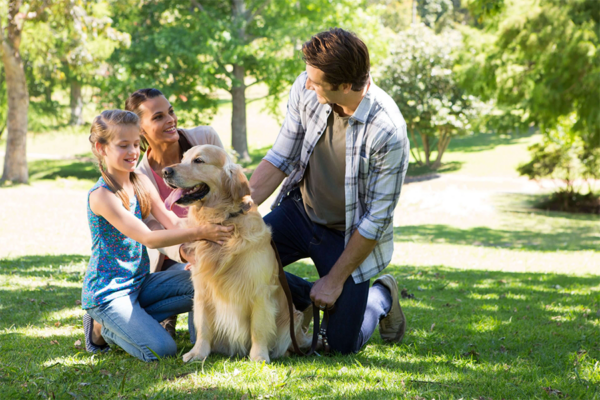
Read Also : Pet Anxiety Solutions: Expert Tips to Calm Your Furry Friend
Top Pet Walking Accessories: A Complete Guide for Pet Owners
🚫 Inconsistent Commands – If one day “down” means “sit,” and another day it means “lie down,” your dog will get confused. Always use consistent words and signals.
🚫 Punishing After the Fact – Dogs associate rewards or punishments with immediate actions. Correct bad behavior as it happens, not later.
🚫 Overusing Treats Without Praise – While treats are great, verbal praise and affection should also be used, so your dog learns to obey even when treats aren’t available.
🚫 Training for Too Long – Dogs have short attention spans. Keep sessions 5-10 minutes for puppies and 15-20 minutes for adult dogs.
Training your dog requires patience, consistency, and positive reinforcement. Every dog learns at their own pace, but with the right techniques, you can develop a well-behaved, confident, and happy companion.
✔ Use positive reinforcement for best results
✔ Clicker training can speed up learning
✔ Leash training ensures safe and controlled walks
✔ Crate training creates a safe space for your dog
✔ Socialization prevents aggression and anxiety
Training is a lifelong journey, but with the right techniques, your dog will become a well-mannered and joyful companion.
Using positive reinforcement and consistency speeds up learning. Short, frequent training sessions work best.
Start as early as 8 weeks old with basic commands like sit, stay, and come.
No. Positive reinforcement is more effective and builds a trusting relationship.
Puppies should train for 5-10 minutes at a time, while adult dogs can handle 15-20 minute sessions.
Redirect your dog’s attention, use consistent commands, and reward good behavior instead of punishing bad behavior.
